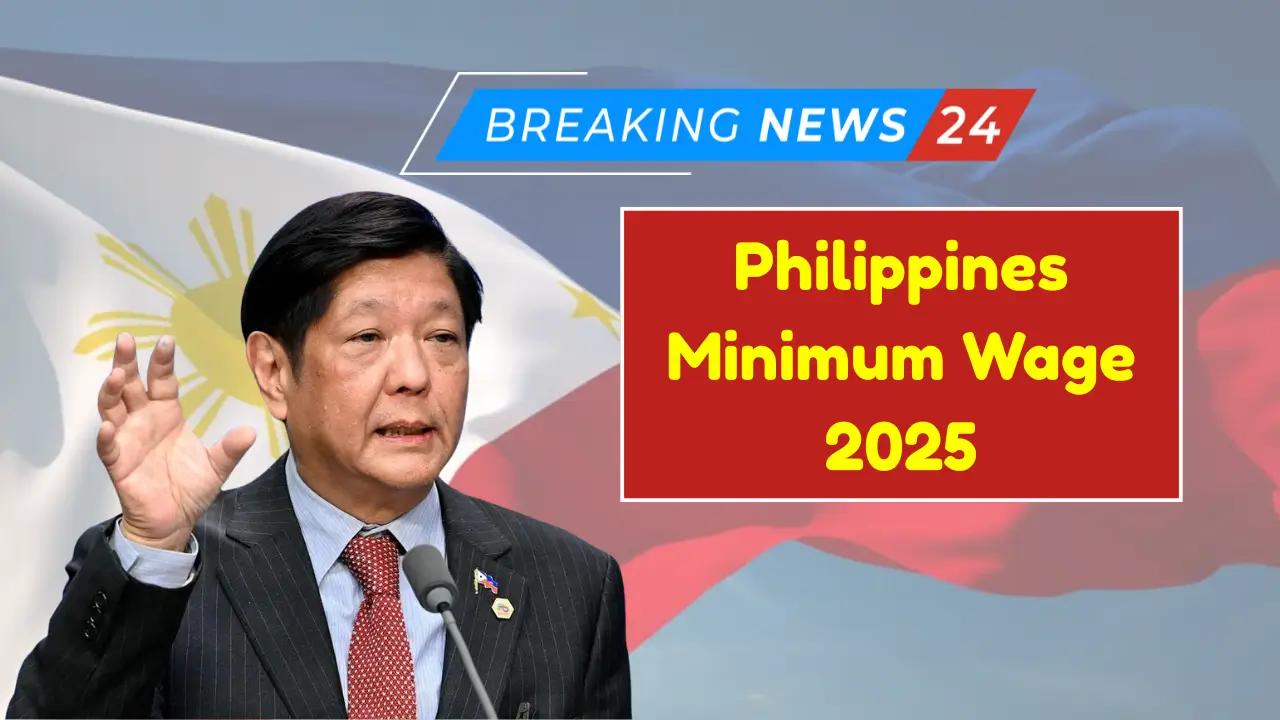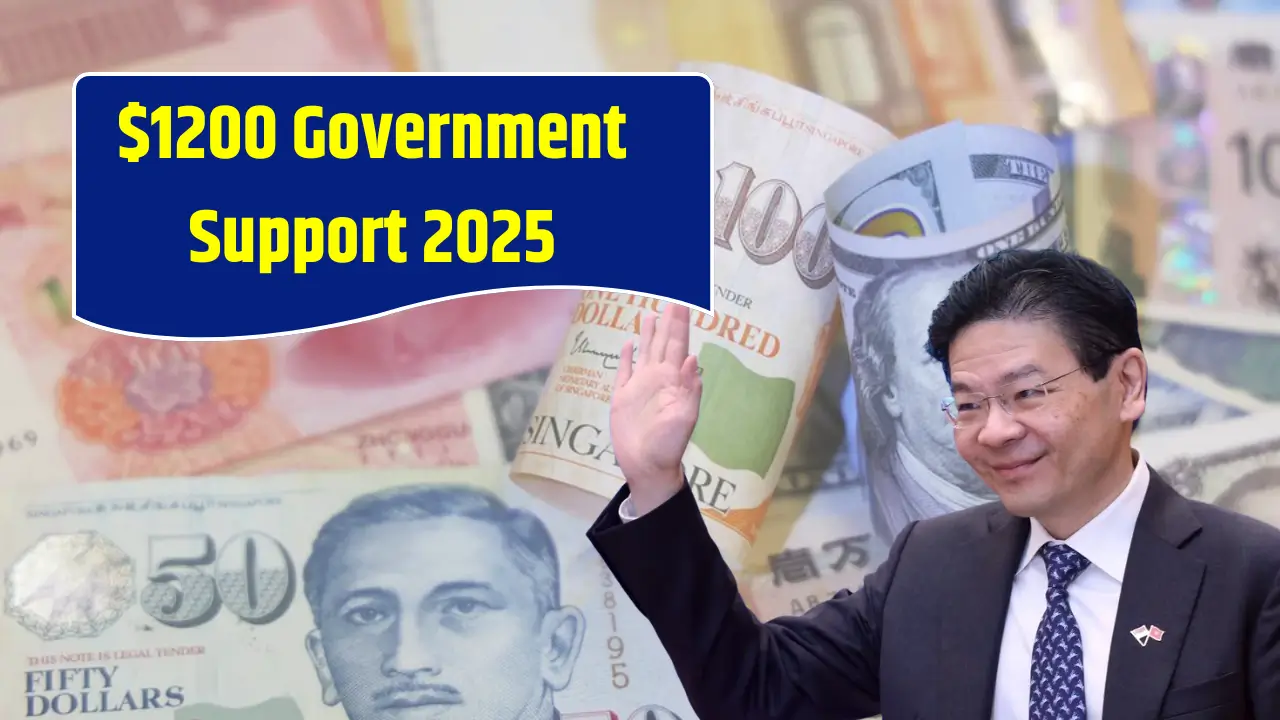Philippines Minimum Wage 2025: The minimum wage system in the Philippines has undergone noticeable updates in 2025 with region-wise new rates that reflect economic disparities, inflationary pressures, and living cost variations across the country.
The minimum wage is a crucial factor in protecting workers’ rights and living standards, especially for low-income groups engaged in both agricultural and non-agricultural sectors.
This article provides an in-depth look into the latest Philippines minimum wage 2025 adjustments with comprehensive details on region-wise rates, the role of wage boards, legislative developments, implications of these changes, and answers common questions to guide workers and employers alike in understanding the current wage landscape.
Overview of Philippines Minimum Wage System
The minimum wage in the Philippines is not fixed nationally but instead varies by region to accommodate localized economic conditions.
The country’s wage setting mechanism is administered through the Regional Tripartite Wages and Productivity Boards (RTWPBs). These boards include representatives from government, employers, and workers, and annually review wage rates based on factors like cost of living, inflation, and economic productivity.
This decentralised system aims to balance fair worker compensation while considering regional economic capacity.
Wage orders issued by these regional boards dictate the minimum daily wage employers must pay to both agricultural and non-agricultural workers, covering contractual, probationary, and regular employment.
Region-Wise Minimum Wage Rates in 2025
The minimum wage rates in 2025 have been revised to help workers cope with rising inflation and living expenses, but these rates remain differentiated across the country owing to regional economic diversity.
The National Capital Region (NCR or Metro Manila) continues to have the highest minimum wage due to its status as the economic hub. Other regions, especially rural and less industrialized areas, have notably lower minimum wages reflecting their local economic situation.
| Region | Daily Minimum Wage Range (PHP) 2025 |
| National Capital Region (NCR) | ₱ 658 – ₱ 695 |
| Cordillera Administrative Region (CAR) | ₱ 470 |
| Ilocos Region (Region I) | ₱ 435 – ₱ 468 |
| Cagayan Valley (Region II) | ₱ 460 – ₱ 480 |
| Central Luzon (Region III) | ₱ 435 – ₱ 550 |
| CALABARZON (Region IV-A) | ₱ 425 – ₱ 560 |
| MIMAROPA (Region IV-B) | ₱ 404 |
| Bicol Region (Region V) | ₱ 400 |
| Western Visayas (Region VI) | ₱ 404 |
| Central Visayas (Region VII) | ₱ 404 |
| Eastern Visayas (Region VIII) | ₱ 404 |
| Zamboanga Peninsula (Region IX) | ₱ 404 |
| Northern Mindanao (Region X) | ₱ 404 |
| Davao Region (Region XI) | ₱ 404 |
| SOCCSKSARGEN (Region XII) | ₱ 404 |
| Caraga (Region XIII) | ₱ 404 |
| Bangsamoro Autonomous Region in Muslim Mindanao (BARMM) | ₱ 404 |
The above table displays the current minimum wage bands as at mid-2025, effective from wage orders issued in the first half of the year and reflecting changes approved by regional wage boards.
Recent Wage Increases and Legislative Efforts
The most significant update occurred in mid-2025 when the minimum wage in Metro Manila was increased to a maximum of ₱695 per day for non-agricultural workers, up from ₱645.
Agricultural workers in non-plantation sectors also saw an increase, from ₱608 to ₱658 daily. These increases benefit nearly one million workers in the region, but many labour advocates argue these rates still fall short of a living wage necessary for families in the capital.
Separately, the Philippine House of Representatives approved a bill in June 2025 proposing a ₱200 across-the-board daily wage hike for all private-sector workers nationwide, which if enacted, would represent the first legislated wage increase since 1989.
However, this bill is pending reconciliation with the Senate’s version that proposes a more modest increase. The final approval and presidential signature will determine the realization of this nationwide adjustment.
Factors Influencing Minimum Wage Variations
The minimum wage disparities among regions are influenced by several factors:
- Cost of Living: Urban areas like Metro Manila have higher costs for housing, transportation, and utilities compared to rural provinces.
- Economic Activity: Regions with more industrial and commercial activity tend to set higher wages reflecting greater productivity.
- Government Policies: Regional wage boards adjust rates based on local conditions including inflation and labour market demands.
- Sector Differences: Agricultural and plantation work typically commands a lower wage compared to non-agriculture roles.
Despite these rationales, many workers across different regions experience challenges, as inflation rates often outpace wage increases, affecting purchasing power.
Role of Regional Tripartite Wages and Productivity Boards
The RTWPBs play a pivotal role in safeguarding fair wages across the Philippines. They hold consultations with labour groups, employers, and government representatives to propose wage orders that balance the interests of workers and businesses.
The boards consider economic data, consumer price indices, and sectoral conditions before issuing wage adjustments. They also encourage productivity-enhancing practices to offset additional labour costs.
Implications for Workers and Employers
The region-wise minimum wage updates directly impact the livelihoods of millions of Filipino workers and the operational costs for businesses.
For workers, these adjustments mean better alignment with basic needs, although ongoing advocacy stresses the need for living wages that cover essentials including healthcare, education, and nutrition.
For employers, wage increases entail higher payroll expenses which can influence hiring decisions, pricing strategies, and overall business sustainability. Government support measures and phased wage adjustments aim to mitigate disruption while promoting fair pay.
Future Outlook on Minimum Wage Policy
The Philippine government is actively debating a standardized national minimum wage, a move that could simplify the current regional wage complexity.
If implemented, the proposed ₱200 daily increase for all private sector workers would meaningfully uplift incomes but also require careful economic balancing. The government is also exploring complementary policies such as subsidies or tax relief to assist small businesses in adapting to higher wage floors.
FAQs on Philippines Minimum Wage 2025
1. Is there a single national minimum wage in the Philippines?
No, the Philippines sets minimum wages based on regional tripartite wage boards, resulting in different rates across the country.
2. What is the current minimum wage in Metro Manila for 2025?
As of July 2025, the daily minimum wage in Metro Manila is ₱695 for non-agricultural workers and ₱658 for agricultural workers.
3. Are there planned nationwide increases to the minimum wage?
Yes, a bill proposing a ₱200 across-the-board daily increase is under consideration but has not yet been enacted into law.
4. Who sets the minimum wage rates in the Philippines?
The Regional Tripartite Wages and Productivity Boards (RTWPBs) set and adjust minimum wage rates based on economic and labour factors.
5. How often are minimum wage rates reviewed and adjusted?
Minimum wage rates are typically reviewed annually or biannually by regional wage boards, although legislative changes can introduce additional adjustments.












